Switzerland during the World Wars
During World War I and World War II, Switzerland maintained armed neutrality, and was not invaded by its neighbors. Consequently, it was of considerable interest to belligerent states as the scene for diplomacy, espionage, and commerce, as well as being a safe haven for refugees.
Part of a series on the |
|---|
| History of Switzerland |
 |
| Early history |
|
| Old Swiss Confederacy |
|
| Transitional period |
|
| Modern history |
|
| Timeline |
| Topical |
|
|
|
World War I
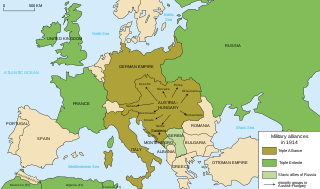
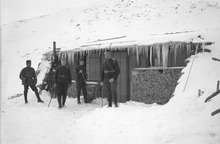
Switzerland maintained a state of armed neutrality during the first world war. However, with two of the Central Powers (Germany and Austria-Hungary) and two of the Entente Powers (France and Italy) all sharing borders and populations with Switzerland, neutrality proved difficult. Under the Schlieffen Plan, the German General Staff had been open to the possibility of trying to outflank the French fortifications by marching through Switzerland in violation of its neutrality, although the plan's eventual executor Helmuth von Moltke the Younger selected Belgium instead due to Switzerland's mountainous topography and the disorganized state of the Belgian Armed Forces.[1] From December 1914 until the spring of 1918 Swiss troops were deployed in the Jura along the French border over concern that the trench war might spill into Switzerland. Of lesser concern was the Italian border, but troops were also stationed in the Unterengadin region of Graubünden.[2]
While the German-speaking majority in Switzerland generally favored the Central Powers, the French- and, later, Italian-speaking populations sided with the Entente Powers, which would cause conflict in 1918. However, the country managed to keep out of the war. During the war Switzerland was blockaded by the Allies and therefore suffered some difficulties. However, because Switzerland was centrally located, neutral, and generally undamaged, the war allowed the growth of the Swiss banking industry.[2] For the same reasons, Switzerland became a haven for foreign refugees and revolutionaries.
Following the organisation of the army in 1907 and military expansion in 1911, the Swiss Army consisted of about 250,000 men with an additional 200,000 in supporting roles.[3] Both European alliance-systems took the size of the Swiss military into account in the years prior to 1914, especially in the Schlieffen Plan.
Following the declarations of war in late July 1914, on August 1, 1914, Switzerland mobilized its army; by August 7 the newly appointed general Ulrich Wille had about 220,000 men under his command. By August 11 Wille had deployed much of the army along the Jura border with France, with smaller units deployed along the eastern and southern borders. This remained unchanged until May 1915 when Italy entered the war on the Entente side, at which point troops were deployed to the Unterengadin valley, Val Müstair and along the southern border.
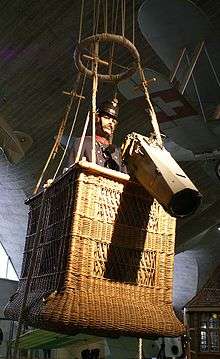
Once it became clear that the Allies and the Central Powers would respect Swiss neutrality, the number of troops deployed began to drop. After September 1914, some soldiers were released to return to their farms and to vital industries. By November 1916 the Swiss had only 38,000 men in the army. This number increased during the winter of 1916–17 to over 100,000 as a result of a proposed French attack that would have crossed Switzerland. When this attack failed to occur the army began to shrink again. Because of widespread workers' strikes, at the end of the war the Swiss army had shrunk to only 12,500 men.[4]
During the war "belligerents" crossed the Swiss borders about 1,000 times,[4] with some of these incidents occurring around the Dreisprachen Piz or Three Languages Peak (near the Stelvio Pass; the languages being Italian, Romansh and German). Switzerland had an outpost and a hotel (which was destroyed as it was used by the Austrians) on the peak. During the war, fierce battles were fought in the ice and snow of the area, with gun fire even crossing into Swiss areas at times. The three nations made an agreement not to fire over Swiss territory which jutted out between Austria (to the north) and Italy (to the south). Instead they could fire down the pass, as Swiss territory was around the peak. In one incident a Swiss soldier was killed at his outpost on Dreisprachen Piz by Italian gunfire.[5]
During the fighting, Switzerland became a haven for many politicians, artists, pacifists, and thinkers.[6] Bern, Zürich, and Geneva became centers of debate and discussion. In Zürich two very different anti-war groups would bring lasting changes to the world, the Bolsheviks and the Dadaists.
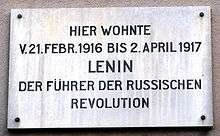
The Bolsheviks were a faction of the Russian Social Democratic Labour Party, centered around Vladimir Lenin. Following the outbreak of the war, Lenin was stunned when the large Social Democratic parties of Europe (at that time predominantly Marxist in orientation) supported their various respective countries' war efforts. Lenin (against the war in his belief that the peasants and workers of the proletariat were fighting the battle of the bourgeoisie for them) adopted the stance that what he described as an "imperialist war" ought to be turned into a civil war between the classes. He left Austria for neutral Switzerland in 1914 following the outbreak of the war and remained active in Switzerland until 1917. Following the 1917 February Revolution in Russia and the abdication of Tsar Nicholas II he left Switzerland on the sealed train to Petrograd, where he would shortly lead the 1917 October Revolution in Russia.
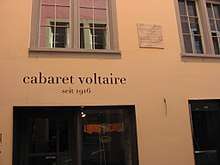
While the Dada art movement was also an anti-war organization, Dadaists used art to oppose all wars. The founders of the movement had left Germany and Romania to escape the destruction of the war. At the Cabaret Voltaire in Zürich they put on performances expressing their disgust with the war and with the interests that inspired it. By some accounts Dada coalesced on October 6, 1916 at the cabaret. The artists used abstraction to fight against the social, political, and cultural ideas of that time that they believed had caused the war. Dadaists viewed abstraction as the result of a lack of planning and of logical thought-processes.[7] When World War I ended in 1918, most of the Zürich Dadaists returned to their home countries, and some began Dada activities in other cities.
In 1917 Switzerland's neutrality came into question when the Grimm–Hoffmann Affair erupted. Robert Grimm, a Swiss socialist politician, travelled to Russia as an activist to negotiate a separate peace between Russia and Germany, in order to end the war on the Eastern Front in the interests of socialism and pacifism. Misrepresenting himself as a diplomat and an actual representative of the Swiss government, he made progress but had to admit to fraud and return home when the Allies found out about the proposed peace deal. Neutrality was restored by the resignation of Arthur Hoffmann, the Swiss Federal Councillor who had supported Grimm but had not consulted his colleagues on the initiative.
Swiss hosts POW invalidated out of military service from Entente and Central Powers
During the war Switzerland accepted 68,000 British, French and German wounded prisoners of war for recovery in mountain resorts. To be transferred the wounded had to have a disability that would negate their further military service or interned over 18 months and deteriorating mental health. The wounded were transferred from prisoner of war camps unable to cope with the number of wounded and sat out the war in Switzerland. The transfer was agreed between the warring powers and organised by the Red Cross.[8]
Interwar period
One potential result of World War I was an expansion of Switzerland itself during the Interwar period. In a referendum held in the Austrian state of Vorarlberg on May 11, 1920, over 80% of those voting supported a proposal that the state join the Swiss Confederation. However, this was prevented by the opposition of the Austrian Government, the Allies, Swiss liberals, the Swiss-Italians and the Swiss-French.[9]
However, the Principality of Liechtenstein managed to exclude itself from Austria in 1918 and signed a monetary and customs union with Switzerland that effectively guaranteed its independence. In 1920, Switzerland joined the League of Nations.
In 1934 the Swiss Banking Act was passed. This allowed for anonymous numbered bank accounts, in part to allow Germans (including Jews) to hide or protect their assets from seizure by the newly established Third Reich.
In 1936 Wilhelm Gustloff was assassinated at Davos; he was the head of the Nazi Party's "Auslands-Organisation" in Switzerland. The Swiss government refused to extradite the alleged assassin David Frankfurter to Germany. Frankfurter was sentenced to 18 years in prison but was pardoned in 1946.
As European tension grew in the 1930s, the Swiss began to rethink their political and military situation. The Social Democratic party abandoned their revolutionary and anti-military stances, and soon the country began to rearm for war.[10] BGB Federal Councillor Rudolf Minger, predicting war would come in 1939, led the rebuilding of the Swiss Army. Starting in 1936, he secured a larger defence budget and started a war bond system. The army was restructured into smaller, better equipped divisions and boot camp for conscripts was extended to 3 months of instruction. In 1937 a war economy cell was established. Households were encouraged to keep a two-month supply of food and basic necessities.[10] In 1938 Foreign Minister Giuseppe Motta withdrew Switzerland from the League of Nations, returning the country to its traditional form of neutrality.
Actions were also taken to prove Switzerland's independent national identity and unique culture from the surrounding Fascist powers. This policy was known as Geistige Landesverteidigung, or "spiritual national defence". In 1937, the government opened the Museum of Federal Charters. Increased use of Swiss German coincided with a national referendum that made Romansh a national language in 1938, a move designed to counter Benito Mussolini's attempts to incite Italian nationalism in the southern Grisons and Ticino cantons.[10] In December of that year in a government address, Catholic-Conservative Councillor Philipp Etter urged a defence of Swiss culture. Geistige Landesverteidigung subsequently exploded, being featured on stamps, in children's books, and through official publications.[10]
World War II

At the outbreak of World War II in 1939, Switzerland immediately began to mobilize for a possible invasion. The transition into wartime was smooth and caused less controversy than in 1914; the country was fully mobilized in only three days.[11] Parliament quickly selected the 61-year-old career soldier Henri Guisan to be General and by 3 September 430,000 combat troops and 210,000 in support services, 10,000 of whom were women, had been mobilized, though most of these were sent home during the Phoney War.[10] At its highest point, 850,000 soldiers were mobilized.[12]
During the war, detailed invasion plans were drawn up by the German military command, such as Operation Tannenbaum, but Switzerland was never attacked.[13] Switzerland was able to remain independent through a combination of military deterrence, economic concessions to Germany and good fortune as larger events during the war delayed an invasion. Attempts by the Swiss Nazi party to effect an Anschluss with Germany failed, largely as a result of Switzerland's sense of national identity and tradition of democracy and civil liberties.[14] The Swiss press criticized the Third Reich, often infuriating its leadership. In turn, Berlin denounced Switzerland as a medieval remnant and its people renegade Germans. Swiss military strategy was changed from one of static defence at the borders to a strategy of attrition and withdrawal to strong, well-stockpiled positions high in the Alps known as the National Redoubt. This controversial strategy was essentially one of deterrence. The idea was to render the cost of invading too high. During an invasion, the Swiss Army would cede control of the economic heartland and population centres but retain control of crucial rail links and passes in the National Redoubt.[14]
Switzerland was a base for espionage by both sides in the conflict and often mediated communications between the Axis and Allied powers by serving as a protecting power. In 1942, the United States Office of Strategic Services (OSS) was established in Bern. Through the efforts of Allen Dulles, the first US intelligence service in Western Europe was created. During the allied invasion of Italy, the OSS in Switzerland guided tactical efforts for the take-over of Salerno and the islands of Corsica and Sardinia.[15]
Despite the public and political attitudes in Switzerland, some higher-ranking officers within the Swiss Army had pro-Nazi sympathies: notably Colonel Arthur Fonjallaz and Colonel Eugen Bircher, who led the Schweizerischer Vaterländischer Verband. In Letters with Suzanne (French: Lettres à Suzanne, Lausanne, Switzerland, 1949), the Swiss journalist Léon Savary retrospectively denounced in this sense "the occult influence of Hitlerism on the Swiss people during the Second World War, which they were not conscious of being under".[16]
German violations
Nazi Germany repeatedly violated Swiss airspace. During the Battle of France, German aircraft violated Swiss airspace at least 197 times.[17] In several air incidents, the Swiss shot down 11 Luftwaffe aircraft between 10 May 1940 and 17 June 1940, while suffering the loss of three of their own aircraft.[17] Germany protested diplomatically on 5 June 1940 and with a second note on 19 June 1940 which contained explicit threats. Hitler was especially furious when he saw that German equipment was used to shoot down German pilots. He said they would respond "in another manner".[17] On 20 June 1940, the Swiss air force was ordered to stop intercepting planes violating Swiss airspace. Swiss fighters began instead to force intruding aircraft to land at Swiss airfields. Anti-aircraft units still operated. Later, Hitler and Hermann Göring sent saboteurs to destroy Swiss airfields but they were captured by Swiss troops before they could cause any damage.[18] Skirmishes between German and Swiss troops took place on the northern border of Switzerland throughout the war.
Allied bombings and violations
Allied aircraft intruded on Swiss airspace throughout World War II. In total, 6,304 Allied aircraft violated Swiss airspace during the war.[19]
Some damaged Allied bombers returning from raids over Italy and Germany would intentionally violate Swiss airspace, preferring internment by the Swiss to becoming prisoners of war. Over a hundred Allied aircraft and their crews were interned in this manner. They were subsequently put up in various ski resorts that had been emptied from lack of tourists due to the war and held until hostilities ended.[20] At least 940 American airmen attempted to escape into France after the Allied invasion of Normandy in June 1944 but Swiss authorities intercepted 183 internees. Over 160 of these airmen were incarcerated in a Swiss prison camp known as Wauwilermoos, which was located near Lucerne and commanded by André Béguin, a pro-Nazi Swiss officer. The American internees remained in Wauwilermoos until November 1944 when the U.S. State Department lodged protests against the Swiss government and eventually secured their release.[21] The American military attaché in Bern warned Marcel Pilet-Golaz, Swiss foreign minister in 1944, that "the mistreatment inflicted on US aviators could lead to 'navigation errors' during bombing raids over Germany".[22]
Switzerland, surrounded by Axis-controlled territory, also suffered from Allied bombings during the war; most notably from the accidental bombing of Schaffhausen by American aircraft on April 1, 1944. It was mistaken for Ludwigshafen am Rhein, a German town 284 kilometres (176 mi) away; forty people were killed and over fifty buildings destroyed, among them a group of small factories producing anti-aircraft shells, ball-bearings, and Bf 109 parts for Germany.[20][23][24][25]
The bombing limited much of the leniency the Swiss had shown toward Allied airspace violations. Eventually, the problem became so bad that they declared a zero-tolerance policy for violation by either Axis or Allied aircraft and authorized attacks on American aircraft.[26] Victims of these mistaken bombings were not limited to Swiss civilians but included the often confused American aircrews, shot down by the Swiss fighters as well as several Swiss fighters shot down by American airmen. In February 1945, 18 civilians were killed by Allied bombs dropped over Stein am Rhein, Vals, and Rafz. Arguably the most notorious incident came on 4 March 1945, when Basel and Zurich were accidentally bombed by American aircraft.[27] The attack on Basel's railway station led to the destruction of a passenger train, but no casualties were reported; a B-24 Liberator dropped its bomb load over Zürich, destroying two buildings and killing five civilians. The crew believed that they were attacking Freiburg in Germany.[24] As John Helmreich points out, the pilot and navigator, in choosing a target of opportunity, "missed the marshalling yard they were aiming for, missed the city they were aiming for, and even missed the country they were aiming for".
The Swiss, although somewhat skeptical, reacted by treating these violations of their neutrality as "accidents". The United States was warned that single aircraft would be forced down and their crews would still be allowed to seek refuge, while bomber formations in violation of airspace would be intercepted. While American politicians and diplomats tried to minimize the political damage caused by these incidents, others took a more hostile view. Some senior commanders argued that as Switzerland was "full of German sympathizers" (an unsubstantiated claim), it deserved to be bombed.[28] General Henry H. Arnold, Commanding General of the U.S. Army Air Forces, even suggested that it was the Germans themselves who were flying captured Allied planes over Switzerland in an attempt to gain a propaganda victory.[29]
From 1943 onwards Switzerland stopped American and British aircraft, mainly bombers, overflying Switzerland on nine occasions, six times by Swiss air force fighters and nine by flak. 36 Allied airmen were killed. On 1 October 1943 the first American bomber was shot down near Bad Ragaz, with only three men surviving. The officers were interned in Davos and the airmen in Adelboden. The representative of the US military intelligence group based in Bern, Barnwell Legge (a US military attaché to Switzerland), instructed the soldiers not to flee but most of them thought it to be a diplomatic joke and gave no regard to his request.[30][31][32]
Refugees
As a neutral state bordering Germany, Switzerland was easy to reach for refugees from the Nazis. Switzerland's refugee laws, especially with respect to Jews fleeing Germany, were strict and have caused controversy since the end of World War II. From 1933 until 1944 asylum for refugees could only be granted to those who were under personal threat owing to their political activities only; it did not include those who were under threat due to race, religion or ethnicity.[33] On the basis of this definition, Switzerland granted asylum to only 644 people between 1933 and 1945; of these, 252 cases were admitted during the war.[33] All other refugees were admitted by the individual cantons and were granted different permits, including a "tolerance permit" that allowed them to live in the canton but not to work. Over the course of the war, Switzerland interned 300,000 refugees.[34] Of these, 104,000 were foreign troops interned according to the Rights and Duties of Neutral Powers outlined in the Hague Conventions. The rest were foreign civilians and were either interned or granted tolerance or residence permits by the cantonal authorities. Refugees were not allowed to hold jobs. Of the refugees, 60,000 were civilians escaping persecution by the Nazis. Of these 60,000, 27,000 were Jews.[33] Between 10,000 and 24,000 Jewish civilian refugees were refused entry.[33] These refugees were refused entry on the asserted claim of dwindling supplies. Of those refused entry, a Swiss government representative said, "Our little lifeboat is full". At the beginning of the war, Switzerland had a Jewish population of between 18,000 and 28,000 and a total population of about 4 million.[17][35][36] By the end of the war, there were over 115,000 refuge-seeking people of all categories in Switzerland, representing the maximum number of refugees at any one time.[33]
%2C_(.jpg)
Switzerland also acted as a refuge for Allied prisoners of war who escaped, including those from Oflag IV-C (Colditz).[37]
Service of Intellectual Assistance to Prisoners of War (SIAP)
In 1939, the Service of Intellectual Assistance to Prisoners of War (SIAP) was created by the International Bureau of Education (IBE), a Geneva-based international organization dedicated to educational matters. In collaboration with the Swiss Federal Council, who initially funded the project, and the International Committee of the Red Cross (ICRC), the SIAP provided over half a million books to prisoners of war during World War II, and organized educational opportunities and study groups in prison camps.[38]
Financial relationships with Nazi Germany
Switzerland's trade was blockaded by both the Allies and by the Axis. Each side openly exerted pressure on Switzerland not to trade with the other. Economic cooperation and extension of credit to the Third Reich varied according to the perceived likelihood of invasion, and the availability of other trading partners. Concessions reached their zenith after a crucial rail link through Vichy France was severed in 1942, leaving Switzerland completely surrounded by the Axis. Switzerland relied on trade for half of its food and essentially all of its fuel but controlled vital trans-alpine rail tunnels between Germany and Italy. Switzerland's most important exports during the war were precision machine tools, watches, jewel bearings (used in bomb sights), electricity, and dairy products. Until 1936, the Swiss franc was the only remaining major freely convertible currency in the world,[39] and both the Allies and the Germans sold large amounts of gold to the Swiss National Bank. Between 1940 and 1945, the German Reichsbank sold 1.3 billion francs (approximately 18 billion Francs adjusted for inflation to 2019) worth of gold to Swiss Banks in exchange for Swiss francs and other foreign currency, which were used to buy strategically important raw materials like tungsten and oil from neutral countries.[33] Hundreds of millions of francs worth of this gold was monetary gold plundered from the central banks of occupied countries. A total of 581,000 francs' worth of "Melmer" gold taken from Holocaust victims in eastern Europe was sold to Swiss banks.[33] In total, trade between Germany and Switzerland contributed about 0.5% to the German war effort.
| Party | Purchases | Sales | Net |
|---|---|---|---|
| USA | 2242.9 | 714.3 | 1528.7 |
| Great Britain | 668.6 | 0 | 668.6 |
| Canada | 65.3 | 0 | 65.3 |
| Germany | 1231.1 | 19.5 | 1211.6 |
| Italy | 150.1 | 0 | 150.1 |
| Japan | 0 | 5 | −5.0 |
| Portugal | 85.1 | 536.6 | −451.5 |
| Spain | 0 | 185.1 | −185.1 |
| Romania | 9.8 | 112.1 | −102.3 |
| Hungary | 0 | 16.3 | −16.3 |
| Slovakia | 0 | 11.3 | −11.3 |
| Turkey | 0 | 14.8 | −14.8 |
| Argentina | 32.7 | 0 | 32.7 |
| France | 193.2 | 0 | 193.2 |
| Greece | 0.5 | 0 | 0.5 |
| Sweden | 77.5 | 3 | 74.5 |
| BIS | 61.5 | 18.3 | 43.2 |
| Market | 71.6 | 667.8 | −596.2 |
| Confederation | 269.3 | 1087.9 | −818.6 |
| Federal Mint | 42.5 | 45.8 | −3.3 |
In the 1990s, controversy over a class-action lawsuit brought in Brooklyn, New York, over Jewish assets in Holocaust-era bank accounts prompted the Swiss government to commission the most recent and authoritative study of Switzerland's interaction with the Nazi regime. The final report by this independent panel of international scholars, known as the Bergier Commission,[33] was issued in 2002[40] and also documented Switzerland's role as a major hub for the sale and transfer of Nazi-looted art during the Second World War.[41]
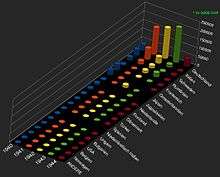
Under pressure from the Allies, in December 1943 quotas were imposed on the importation and exportation of certain goods and foodstuffs and in October 1944 sales of munitions were halted. However the transit of goods by railway between Germany, Italy and occupied France continued. North-South transit trade across Switzerland increased from 2.5 million tons prior to the war to nearly 6 million tons per year. No troops or "war goods" were supposed to be transshipped. Switzerland was concerned that Germany would cease the supply of the coal it required if it blocked coal shipments to Italy while the Allies, despite some plans to do so, took no action as they wanted to maintain good relations with Switzerland.[42] Between 1939 and 1945 Germany exported 10,267,000 tons of coal to Switzerland. In 1943 these imports supplied 41% of Swiss energy requirements. In the same period Switzerland sold electric power to Germany equivalent to 6,077,000 tons of coal.[43]
See also
- Aerial Incidents in Switzerland in World War II
- Neutral powers during World War II
Notes and references
- Stackelberg (October 3, 2003). Stackelberg, Roderick; Winkle, Sally A. (eds.). The Nazi Germany Sourcebook : An Anthology of Texts. Routledge. p. 31. ISBN 9780203463925.
- World War I-Introduction in German, French and Italian in the online Historical Dictionary of Switzerland.
- World War I – Preparation in German, French and Italian in the online Historical Dictionary of Switzerland.
- World War I – 1914 to 1918 in German, French and Italian in the online Historical Dictionary of Switzerland.
- "Gefallen 1916 an der Dreisprachenspitze". www.suedostschweiz.ch (in German). Retrieved December 9, 2018.
- Culture during World War I in German, French and Italian in the online Historical Dictionary of Switzerland.
- "Introduction". Archived from the original on November 2, 2008.
- "Switzerland's forgotten role in saving World War One lives". bbc.com. BBC. May 30, 2016. Retrieved May 30, 2016.
- – Centre d'études et de documentation sur la démocratie directe Archived July 6, 2011, at the Wayback Machine
- Church, Clive H.; Head, Randolph C. (2013), "The shocks of war, 1914–1950", A Concise History of Switzerland, Cambridge Concise Histories, New York: Cambridge University Press, pp. 209–223, ISBN 978-0-521-14382-0
- Rudolf Jaun (September 2, 2014). "Mobilmachung der Armee von 1939: "Überall Menschen, Pferde, Aufregung"". Neue Zürcher Zeitung NZZ (in German). Zurich, Switzerland. Retrieved August 18, 2016.
- Bonjour 1978, p. 431.
- "Let's Swallow Switzerland" by Klaus Urner (Lexington Books, 2002).
- Independent Commission of Experts Switzerland - Second World War (UEK/CIE), ed. (2002). Switzerland, National Socialism, and the Second World War. Final Report (Report). Zurich, switzerland: Pendo Verlag GmbH. ISBN 3-85842-601-6.
- Bruce L. Brager (2006). The Office of Strategic Services. MilitaryHistoryOnline.com. Retrieved January 17, 2016.
- Chevallaz, Georges André (2001). The challenge of neutrality: diplomacy and the defense of Switzerland. Lexington Books. ISBN 9780739102749.
- The Neutrals by Time Life (Time Life Books, 1995) states 25,000
- Essential Militaria, Nicholas Hobbes, 2005
- de:Schweizer Luftwaffe#Im Zweiten Weltkrieg
- The Diplomacy of Apology: U.S. Bombings of Switzerland during World War II Archived May 5, 2007, at the Wayback Machine
- Dwight S. Mears, "The Catch-22 Effect: The Lasting Stigma of Wartime Cowardice in the U.S. Army Air Forces," The Journal of Military History 77 (July 2013): 1037–43.
- Olivier Grivat (February 11, 2013). "POW medal recognises US aviators' suffering". swissinfo. Retrieved October 23, 2015.
- Schaffhausen im Zweiten Weltkrieg
- US-Bomben auf Schweizer Kantone Archived September 28, 2007, at the Wayback Machine
- Military Agency Records
- Regan, Geoffrey. Blue on Blue – A History of Friendly Fire. Avin Books, New York, 1995.
- Halbrook, Stephen (2003). Target Switzerland: Swiss Armed Neutrality in World War II. Da Capo Press. p. 224. ISBN 0-306-81325-4.
- Prince, Cathryn (2003). Shot from the sky : American POWs in Switzerland. Annapolis, Md.: Naval Institute Press. p. 179. ISBN 1-55750-433-4.
- Petersen, Neal (1996). From Hitler's Doorstep: the Wartime Intelligence Reports of Allen Dulles, 1942–1945. University Park, Pennsylvania: Penn State Press. p. 398. ISBN 0-271-01485-7.
- Franz Kasperski (September 7, 2015). "Abgeschossen von der neutralen Schweiz" (in German). Schweizer Radio und Fernsehen SRF. Retrieved October 23, 2015.
- "Forced Landing". climage.ch. Retrieved October 23, 2015.
- "Gedenkstein für Internierten-Straflager" (in German). Schweiz aktuell. October 23, 2015. Retrieved October 23, 2015.
- Bergier, Jean-Francois; W. Bartoszewski; S. Friedländer; H. James; H. Junz; G. Kreis; S. Milton; J. Picard; J. Tanner; D. Thürer; J. Voyame (2002). Final Report of the Independent Commission of Experts Switzerland – Second World War (PDF). Zürich: Pendo Verlag GmbH. p. 107. ISBN 3-85842-603-2.
- Asylum in German, French and Italian in the online Historical Dictionary of Switzerland.
- Second World War-Refugees in German, French and Italian in the online Historical Dictionary of Switzerland. states 28,000
- Switzerland from the Shoah Resource Foundation accessed February 4, 2009
- Reid, Pat The Colditz Story, The Latter Days at Colditz
- Avanzini, Guy; Darcy de Oliviera, Rosiska; Egger, Eugen; Roller, Samuel; Stock, Rodney; Suchodolski, Bogdan (1979). The International Bureau of Education in the service of educational development. UNESCO. pp. 51, 80. ISBN 92-3-101733-0.
- Eichengreen, Barry; Reis, Jaime; MacEdo, Jorge Braga de (May 16, 1996). Currency Convertibility: The Gold Standard and Beyond. ISBN 9780203984291.
- Independent Commission of Experts Switzerland – Second World War. "Switzerland, National Socialism and the Second World War Final Report" (PDF). Independent Commission of Experts Switzerland – Second World War. Retrieved June 25, 2017.
- Laird, Michèle (November 7, 2013). "A race against time Swiss urged to provide missing links to Nazi-looted art". LootedArt.com. Retrieved June 25, 2017.
- Helmreich, Dr. Jonathan E. (Summer 2000). "The Diplomacy of Apology: U.S. Bombings of Switzerland during World War II". Aerospace Power Journal. Archived from the original on May 5, 2007.
- Golson, p.294
Further reading
- Bonjour, Edgar (1978). "Swiss Neutrality During Two World Wars". In Luck, James Murray; Burckhardt, Lukas F.; Haug, Hans (eds.). Modern Switzerland. The Society for the Promotion of Science and Scholarship Inc. pp. 419–438. ISBN 0-930664-01-9.
- Codevilla, Angelo M. Between the Alps and a Hard Place: Switzerland in World War II and the Rewriting of History, (2013) ISBN 0-89526-238-X excerpt and text search
- Golson, Eric Bernard, The Economics of Neutrality: Spain, Sweden and Switzerland in the Second World War (2011) PhD thesis, LSE, 500pp. full text
- Kreis, Georg. Switzerland and the Second World War (2013) excerpt and text search
- Petropoulos, Jonathan, "Co-Opting Nazi Germany: Neutrality in Europe During World War II." Dimensions 14.1 (2000): 13+. excerpt</ref>
- Schelbert, Leo, ed. Switzerland Under Siege 1939–1945, editor ISBN 0-89725-414-7
- Wylie, Neville. Britain, Switzerland, and the Second World War (Oxford U.P. 2003)
External links
- Moos, Carlo: Domestic Politics and Neutrality (Switzerland), in: 1914-1918-online. International Encyclopedia of the First World War.
- Bürgisser, Thomas: Internees (Switzerland) , in: 1914-1918-online. International Encyclopedia of the First World War.
- Switzerland's Neutrality
- Switzerland and the First World War
.svg.png)